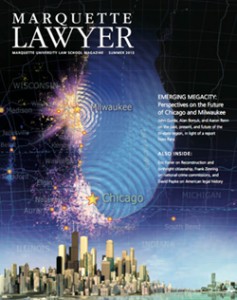The Boston Case: Moving the Line on the Public Safety Exception
My practice is nearly exclusively a criminal appellate practice, and it’s been that way for almost 10 years. Being a one-trick pony, I can’t help but think about legal issues in the news in the context of an imaginary appeal. Of course, recently the news was flooded with stories about the Boston Marathon bombing. The issue that grabbed my interest the most was all of the talk centered on not informing captured suspect Dzhokhar Tsarnaev his Miranda rights pursuant to the public safety exception.
The idea behind the public safety exception makes sense: gathering information from a suspect to ward off an immediate threat. The exception was originally created nearly 20 years ago, but in the past 10 years or so, has become stretched (some say past recognition) to deal with terrorist threats. But that’s neither here nor there — the public safety exception and the suppression of evidence obtained from it is a trial lawyer’s concern.
First, told or not told, Tsarnaev has all of the same rights every American citizen has, including the right to remain silent and the right to an attorney. In this era of cop and robbers television (“Law & Order” in all its various forms has been on the air for 23 years), it seems self-evident that a person has those rights. But still, whether he knows he has those rights or not, the government has an obligation to inform a suspect he has them. But what happens when the defense persuades a court that law enforcement interrogated a person in violation of Miranda? That evidence is suppressed and so are the fruits of it. This is the part that really interests the appellate lawyer in me, because the question I keep coming back to here, is: so what?
If any of the news reports are to be believed, and obviously those outside of the parties won’t know until the trial, if there is one, the government has built a relatively strong case against Tsarnaev without his help. So even if some of his statements are suppressed, it doesn’t really matter because the government will still have plenty of evidence to go around. Presumably, the people who did the interrogating had a really good sense of what evidence they already had against him. Perhaps, sure in its case (even though the investigation was in the infancy), the government opted to question Tsarnaev and ask him everything it could think of. Worst case scenario, some cumulative evidence gets suppressed.


